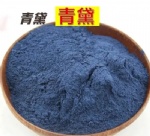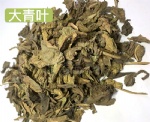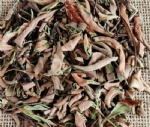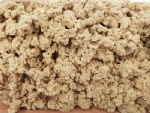
|
KWOK SHING HONG |
|
|||
Products CategoryContact Us
Add: China |
FOLIUM MORI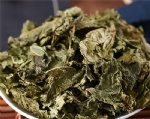
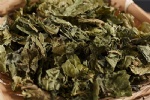
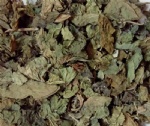
Product name : FOLIUM MORI Item : GMP Details :Mulberry leaves are the dry leaves of the mulberry plant in the mulberry family. The stem is generally upright with many branches, with a yellowish brown outer skin and gray green branches; Leaves alternate; The leaves are ovoid or elliptical, with green on the top and light green on the bottom, and obvious veins on the leaves; It is dioecious, with spikes, chartreuse, and the male inflorescence is longer than the female inflorescence. Its taste is sweet and bitter, with a flowering period from April to May and a fruiting period from May to July. Mulberry trees are native to central and northern China, and are now cultivated in various provinces and regions from northeast to southwest, northwest to Xinjiang. They are also cultivated in North Korea, Japan, Mongolia, Central Asian countries, Russia, Europe, as well as India and Vietnam. Sangxi enjoys a warm and humid climate, slightly tolerant of shade, drought, waterlogging, and barren conditions, with strong adaptability to soil. Mulberry seedling breeding can be divided into sexual reproduction and asexual reproduction. Sexual reproduction uses seeds for reproduction, and asexual reproduction includes grafting, cutting and layering. Mulberry leaves are first recorded in the "Shennong Materia Medica Classic", and their functions in dispersing wind and clearing heat, clearing the lungs and moistening dryness, and cooling blood and brightening the eyes are recorded in the "Treatise on Medicinal Properties" and "Materia Medica Revitalization". Mulberry leaves have certain antibacterial and lipid-lowering effects. Mulberry leaves combined with chrysanthemums, combined with two herbs, are used in combination. One is for clearing heat, and the other is for dispersing wind. Together, they have the effects of clearing heat, calming the liver, and brightening the eyes. The saying in "Mencius" that "a house with five acres of land can be planted with mulberry trees, and fifty acres can be used for clothing and silk" proves the early planting and utilization of mulberry trees in China. Mulberry leaves can disperse wind heat on the outside, clear the lungs, calm the liver, and brighten the eyes on the inside. They have the effects of dispersing wind, clearing heat, moistening the intestines, and relieving constipation. 1. Soothing Wind and Clearing Heat: Mulberry leaves have the effect of soothing wind and clearing heat, and can be used for colds caused by exogenous wind heat pathogens, alleviating symptoms such as aversion to cold, fever, cough, and phlegm in patients. 2. Moisturizing and defecating: Mulberry leaves also have the function of moistening and defecating. Patients with long-term constipation can consume mulberry leaves, which can help increase gastrointestinal peristalsis and achieve the goal of improving constipation. The medicinal value of mulberry leaves: 1. Mulberry leaves are the dry leaves of the mulberry plant in the mulberry family. Harvested after the first frost, impurities are removed, and dried in the sun. It is a type of dispersing wind heat medicine that can be taken orally or applied externally. It has a cold nature, a sweet and bitter taste, and has the effects of dispersing wind heat, clearing the lungs and moistening dryness, clearing the liver and brightening the eyes. It can treat symptoms such as wind heat, cold, lung heat, dry cough, dizziness, headache, and blurred vision. Modern Chinese and western medicine use mulberry leaves and mulberry leaf biological agents as drugs to improve diabetes and other difficult and miscellaneous diseases, and think that their effects are extremely extensive. There are functions such as clearing the lungs and moistening dryness, relieving cough, removing heat, resolving phlegm, and treating night sweats; Nourishing the liver, clearing the liver and brightening the eyes, treating dizziness, dizziness, insomnia, and eliminating eye fatigue; Reduce swelling, clear blood, treat dysentery, abdominal pain, lose weight, eliminate beriberi, promote diuresis, and promote small intestine; Anti stress, cooling blood, lowering blood pressure, lowering blood lipids, preventing myocardial infarction, cerebral hemorrhage, dispelling headaches, and long hair; Reduce blood sugar, resist diabetes, etc. 2. Anticoagulant effect Mulberry leaf extract can significantly prolong the whole blood coagulation time in mice and the activated partial thromboplastin (APTI) time, prothrombin (PT) time, and thrombin (TT) time in rabbit plasma. Due to the fact that the initiation of the coagulation process involves both exogenous and endogenous processes, APTI reflects the activity of the endogenous coagulation pathway, PT reflects the activity of the exogenous coagulation pathway, and TT reflects the activity of thrombin, a common pathway between the two, indicating that mulberry leaves have a direct inhibitory effect on the thrombin fibrinogen reaction. 3. Hypotensive effect Rutin, quercetin, and quercetin in mulberry leaves can increase the contractile force and output of isolated and in situ frog hearts, and reduce heart rate. Rutin causes vasoconstriction in the lower limbs of toads and rabbit ears, while quercetin can dilate coronary arteries and improve myocardial circulation. γ- Aminobutyric acid, rutin, and quercetin have the effect of lowering blood pressure. γ- Aminobutyric acid is a neurotransmitter that can promote brain tissue metabolism and restore brain cell function. At the same time, it can improve brain blood flow, enhance the activity of angiotensin converting enzyme I, and promote a decrease in blood pressure. 4. Hypoglycemic, cholesterol lowering, antithrombotic and anti atherosclerotic effects Mulberry leaf can inhibit the formation of fatty liver, reduce serum fat and inhibit the formation of atherosclerosis. The active ingredients include DNJ, phytosterols, flavonoids, etc. Mulberry leaves contain flavonoids that strengthen capillaries and reduce blood viscosity. In addition, mulberry leaf tea contains components that oxidize LDL lipoproteins in antibodies. Therefore, mulberry leaves not only lose weight and improve hyperlipidemia, but also have the effect of preventing myocardial infarction and cerebral hemorrhage. Japanese expert Yoshito Tui confirmed that mulberry leaf extract has inhibitory effect on hyperlipidemia, serum lipid elevation and atherosclerosis. Mulberry leaf tea can significantly increase serum high-density lipoprotein (HDL-C) and HDL-C/TC (p<0.05), significantly reduce total cholesterol (TC), LDL-C, triacylglycerol (TG) (p<0.05), and significantly reduce lipid peroxide (LPO) (p<0.001) in hyperlipidemic rats. It is said that mulberry leaf tea can reduce blood lipids and glucose, soften blood vessels, and eliminate peroxides in the body, Thus, it can inhibit the increase of serum lipids and atherosclerosis in hyperlipidemia (Huang Daiqing et al., 1995). 5. Antibacterial and anti-inflammatory effects: Mulberry leaf juice has a good inhibitory effect on the growth of most Gram positive and Gram negative bacteria, as well as some yeast bacteria (Fan Lisheng, 2001). Moreover, the required antibacterial concentration is low, the pH range is wide (4-9), and the thermal stability is strong. Rutin in mulberry can significantly inhibit traumatic edema in rats and prevent the development of conjunctivitis, auriculitis, and pulmonary edema. Mulberry leaves have strong anti-inflammatory effects, which are consistent with the effects of dispelling wind and clearing heat (Chen Fujun et al., 1995) 6. Antiviral and anti-tumor effects Mulberry leaves can prevent the generation of cancer cells and improve human immunity. The main functional components are DNJ, flavonoids, mulberry extract γ- Aminobutyric acid and vitamins can inhibit chromosomal and genetic mutations. DNJ has significant anti retroviral activity (Tierney, 1995). Its IG30 ranges from 1.2 to 2.5 μ G/mL, and with the increase of DNJ dosage, the inhibitory effect increases (Ouyang Zhen, 2003). The inhibitory rate of DNJ on tumor metastasis is 80.5%, and its inhibitory mechanism may be that DNI weakens the metastasis ability of tumors by inhibiting the activity of glycosidases to produce immature carbohydrate chains on the surface of tumor cells. Korean scholar Kim (2000) discovered two types of flavonoids quercetin-3 isolated and purified from mulberry leaves- β- D-glucopyranoside and quercetin-3-7-dioxygen- β- D-glucopyranoside showed a significant inhibitory effect on the growth of human promyelocytic leukemia cells (HL-60). Morin in mulberry leaves has anticancer activity, while vitamins in mulberry leaves have an inhibitory effect on mutagens. 7. Anti aging and anti fatigue effects The Clinical Pharmacology Research Institute of Zhejiang University has confirmed through a four-year experiment (et al., 2004) that mulberry leaves have tonifying and anti-aging effects similar to ginseng. Ginseng belongs to heat tonifying, while mulberry leaves belong to clearing tonifying, without taboo restrictions. It can be used for all ages and is suitable for all seasons. In addition, the quercetin, phenolic compounds, vitamin C and other components contained in mulberry leaves can prevent oxidative damage by inhibiting or clearing free radicals. Mulberry leaves have the functions of tonifying, anti-aging and stabilizing nervous system functions similar to ginseng, which can alleviate emotional excitement caused by physiological changes, improve the activity of superoxide dismutase in the body, prevent the production of harmful substances in the body, and reduce or eliminate lipofuscin that has been produced and accumulated in the body (Huang Dong et al., 2000). Mulberry leaves can improve the tolerance of mice to high temperature stimulation and prevent adrenal cortex distribution dysfunction caused by stress stimulation. When adrenal function is compromised, mulberry leaves can restore it to normal. Mulberry leaves can prolong the swimming and rotating time of mice, enhance the body's endurance, and prolong the lifespan of fruit flies. It can effectively eliminate superoxide anions produced by biological oxidation and has the effect of delaying aging (Tang Fadi et al., 2000). 8. Anti filarial effect Single flavored mulberry leaf injection has an anti filarial effect, and mulberry leaf tablets can be used to treat filarial elephantiasis and chyluria (Yao Lianchu, 1996; Wang Peiyi, 1999). Its mechanism of action may be a comprehensive result of the anti-inflammatory, anti-inflammatory, tissue softening, and antibacterial effects of components such as rutin, quercetin, isoquercetin, coumarin, and chlorogenic acid in mulberry leaves. 9. Antispasmodic and anti ulcer effects Quercetin in mulberry leaves can reduce the tension of intestinal and bronchial smooth muscles, and its spasmolytic effect is stronger than that of rutin. Rutin can reduce gastric motility in rats and relieve small intestinal smooth muscle spasms caused by barium chloride. Subcutaneous injection of rutin 5-10 mg/kg can significantly reduce the number of gastric ulcers caused by pylorus ligation in rats (Xu Ailiang et al., 2005). 10. Cosmetic effects Mulberry leaves are the frosted leaves of the mulberry plant in the mulberry family. Traditional Chinese medicine believes that mulberry leaves have a bitter, sweet, and cold taste, and have the effects of dispersing wind, removing heat, clearing the liver, and brightening the eyes. Research has shown that mulberry leaves also have good skin beauty effects, especially for acne and brown spots on the face. Acne, commonly known as acne, is an inflammatory skin disease commonly seen in young people. After young men and women enter the stage of puberty and development, the levels of sexual hormones in their bodies increase, promoting the proliferation and enlargement of the sebaceous glands, increasing their secretion, leading to sebum accumulation, blocking the hair follicle opening, and the increased sebum cannot be discharged in a timely manner, forming acne. The occurrence of acne, although mainly due to endocrine changes during adolescence, is caused by a relative increase in the secretion of male hormones compared to female hormones. However, high fat, high sugar diet, and long-term constipation are important causes of acne. Traditional Chinese medicine believes that overeating greasy and spicy foods can lead to heat accumulation and dampness in the spleen and stomach, and external pathogens invading the skin can lead to acne. Due to the heat clearing and detoxifying effects of mulberry leaves, some people have tried mulberry leaf decoction to treat 258 cases of acne, and its effectiveness has reached over 89%. The specific method is to take 50 grams of fresh mulberry leaves daily and decoct them with water three times, usually taking effect within 15 days. Some people use fresh mulberry leaves in moderation, mash them up, and apply them to the acne area for 30 minutes daily, achieving satisfactory results. 11. Detoxification effect Mulberry leaves have antibacterial, anti-inflammatory, heat clearing, and detoxifying effects. The DNJ mineral contained in mulberry leaves can moisten the intestines, relieve constipation, and effectively alleviate the accumulation of toxins in the body. Edible methods of mulberry leaves Tea substitute: Drinking mulberry leaf tea has the benefits of replenishing water, losing weight, reducing blood viscosity, etc. However, it is not advisable to drink a large amount of mulberry leaf tea before bedtime. 1. Replenishing water: Replenishing water is because mulberry leaf tea is brewed with water. Drinking some mulberry leaf tea appropriately can provide the body with the necessary water. 2. Weight loss: Mulberry leaf tea can reduce cholesterol and triglycerides in the blood, helping to prevent fat accumulation and assisting in weight loss. 3. Reducing blood viscosity: Reducing blood viscosity is because the flavonoid content in mulberry leaves is relatively high, which can have the effect of reducing blood viscosity. In addition, it is generally not allowed to drink mulberry leaf tea for people with allergies or weak spleen and stomach, in order to avoid worsening symptoms. Dry the mulberry leaves in the sun and brew the offspring's tea with hot water. Mulberry leaves have many benefits for the human body, such as lowering blood lipids, lowering blood pressure, lowering cholesterol, relieving spasms, moistening the intestines, and defecating. Cold Mix: Wash the mulberry leaves thoroughly, remove the petioles, cut them into shreds, blanch them in boiling water, add seasoning, mix well, and then serve. Cook Congee: Prepare a proper amount of fresh mulberry leaves, a piece of fresh lotus leaves, and a proper amount of japonica rice. First, wash and fry the fresh mulberry leaves and fresh lotus leaves, remove the juice and residue, and add the japonica rice to cook Congee. Barcode: GMP Ingredients: Mulberry leaves Specification: 16oz (454g) Effect: Soothing wind and clearing heat, moistening intestines and defecating, clearing lungs, calming liver, and brightening eyes Send Inquiry : |
Home
|
About Us
|
Products
|
News
|
Feedback
|
Contact Us
|
SiteMap
Copyright © 2025 KWOK SHING HONG All Rights Reserved
Copyright © 2025 KWOK SHING HONG All Rights Reserved






 KWOK SHING HONG
KWOK SHING HONG  LEAF
LEAF 